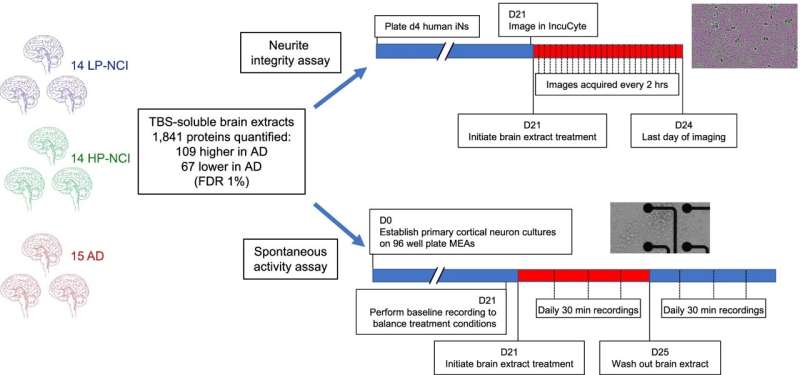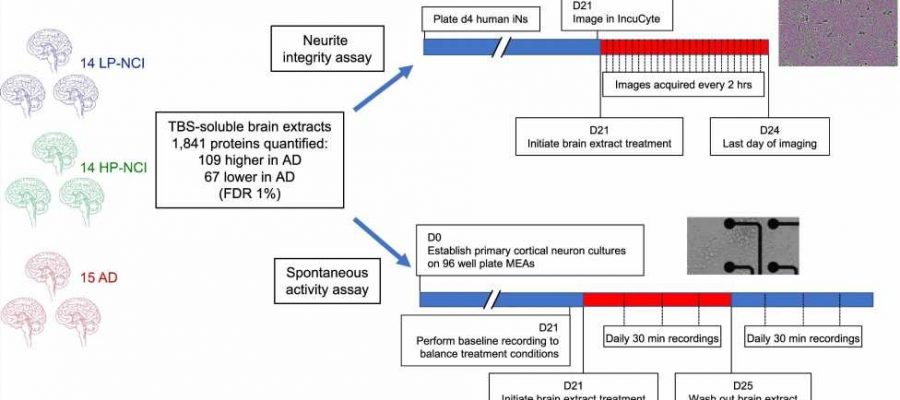
Alzheimer’s disease (AD) currently has no cure and is predicted to affect over 100 million people worldwide by 2050. Ongoing research is focused on two key neurotoxic proteins: amyloid beta (Aβ) and tau. While these proteins have been shown to be associated with AD, for some people with the disease, the levels of Aβ and tau do not consistently explain or correlate with the severity of cognitive decline.
To identify other proteins that may be directly involved with fundamental aspects of AD, like synaptic loss and neurodegeneration, investigators at Brigham and Women’s Hospital, a founding member of the Mass General Brigham health care system, exposed laboratory neurons to human brain extracts from about 40 people who either had AD, were protected from AD despite having high Aβ and tau levels, or were protected from AD with little or no Aβ and tau in their brains.
The researchers identified and validated ganglioside GM2 activator (GM2A) as a protein able to reduce neuronal firing and induce a loss of neurite integrity. These protein characteristics may contribute to the cause of AD, progression of the disease, or both.
“Our data helps identify a new and potentially important protein that may be associated with the pathogenesis of Alzheimer’s disease,” said senior author Tracy Young-Pearse, Ph.D., from the Department of Neurology. “Interestingly, GM2A has been previously implicated as a causative agent in a lysosomal storage disorder very similar to Tay-Sachs disease, another condition like AD that destroys neurons.”
Source: Read Full Article
